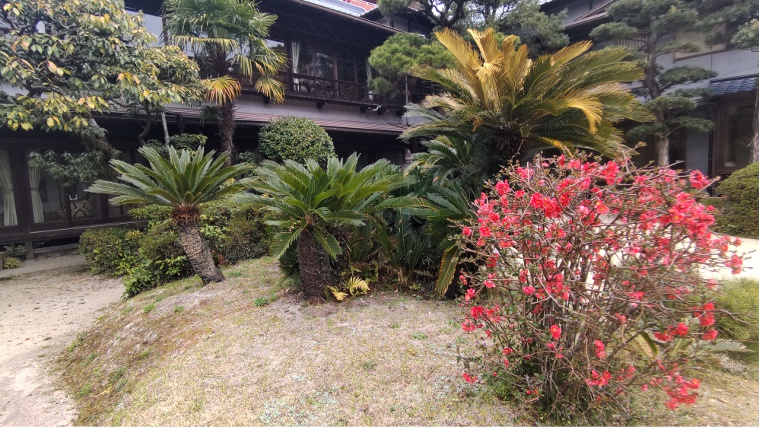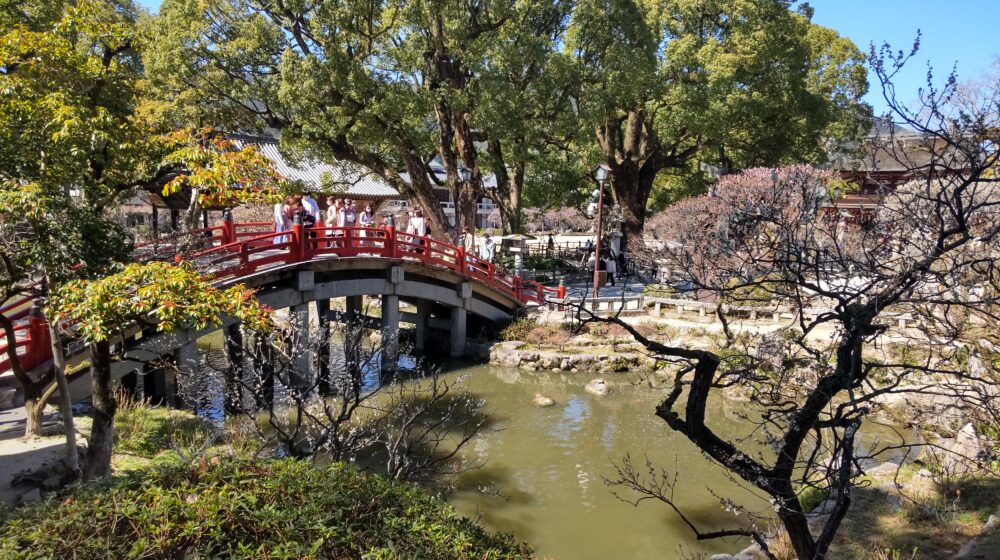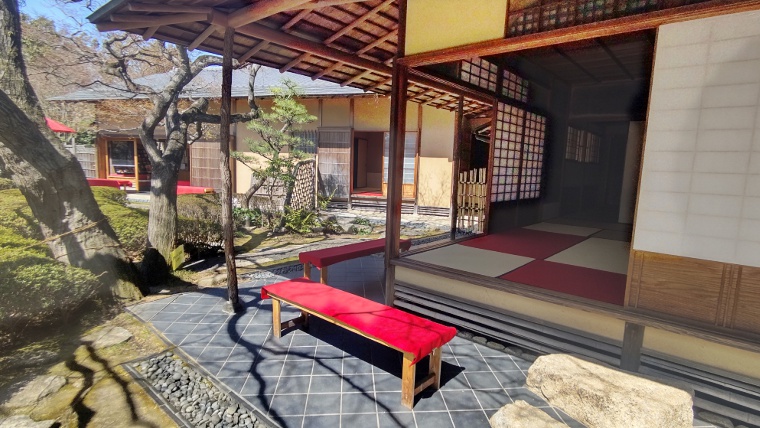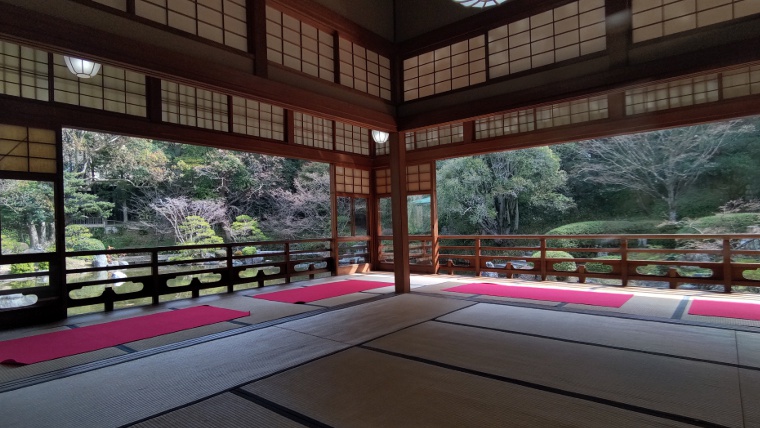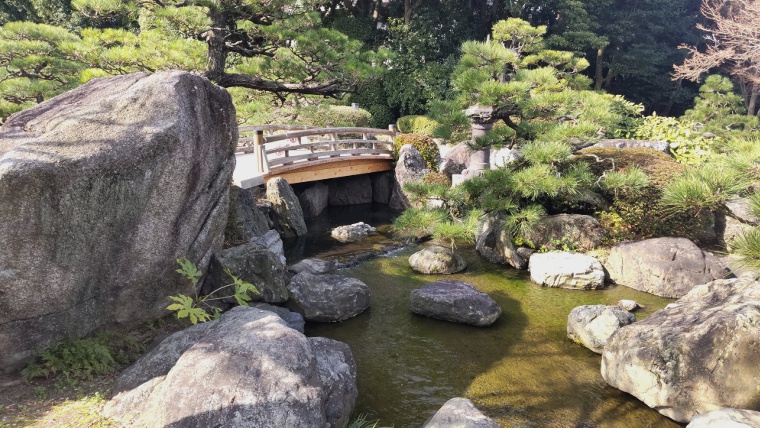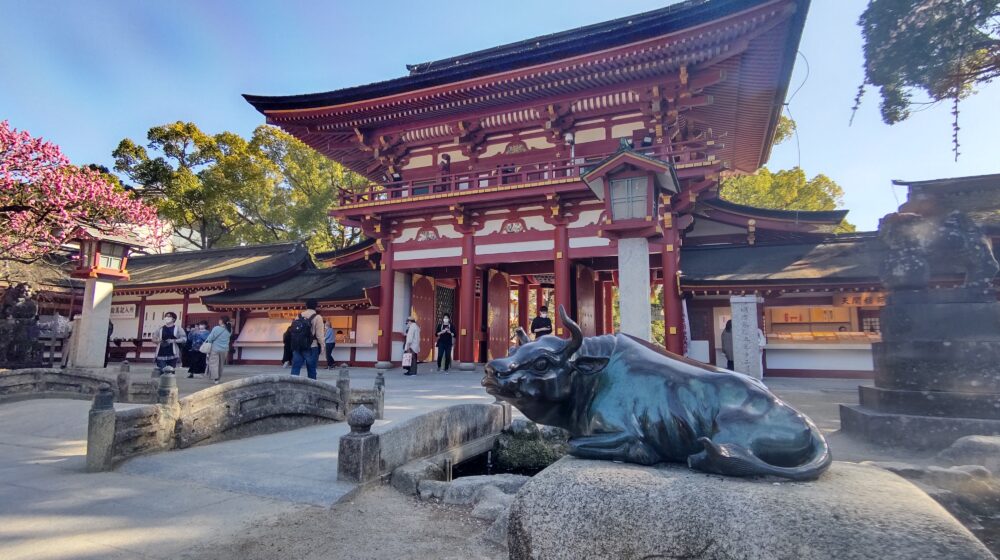Gio-ji Temple, Arashiyama | All You Need to Know
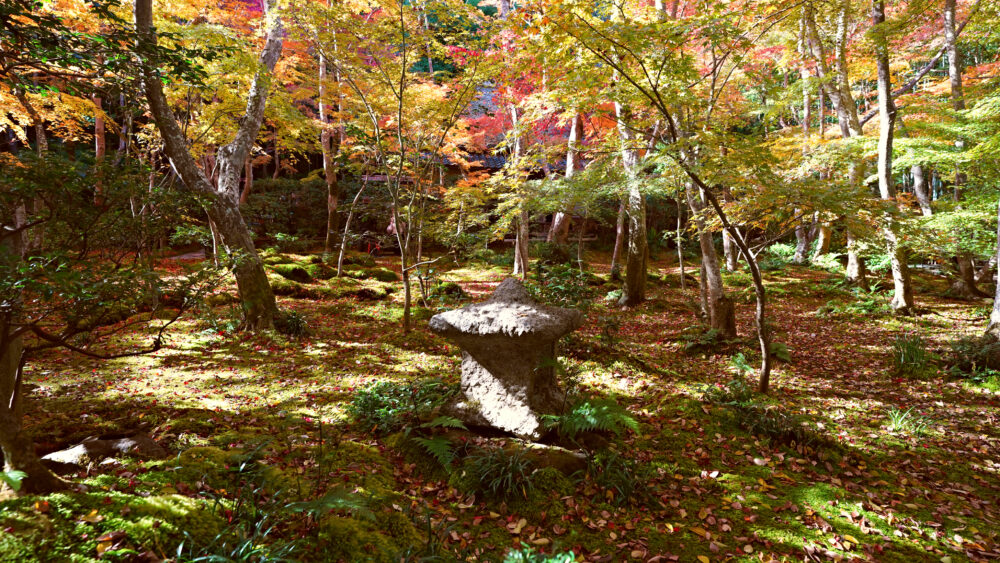
Gio-ji Temple, a tranquil nunnery, is nestled in the serene Oku-Saga area of Kyoto’s Arashiyama district. Step into a world of quiet beauty within our rustic, thatched-roof hermitage and enchanting bamboo grove. This scene is particularly stunning during the vibrant autumn season.
Garden Features
Gioji is a tranquil temple surrounded by trees that often cover it in deep shade. Its lush moss garden, encircled by a bamboo grove and maple trees, is famous.
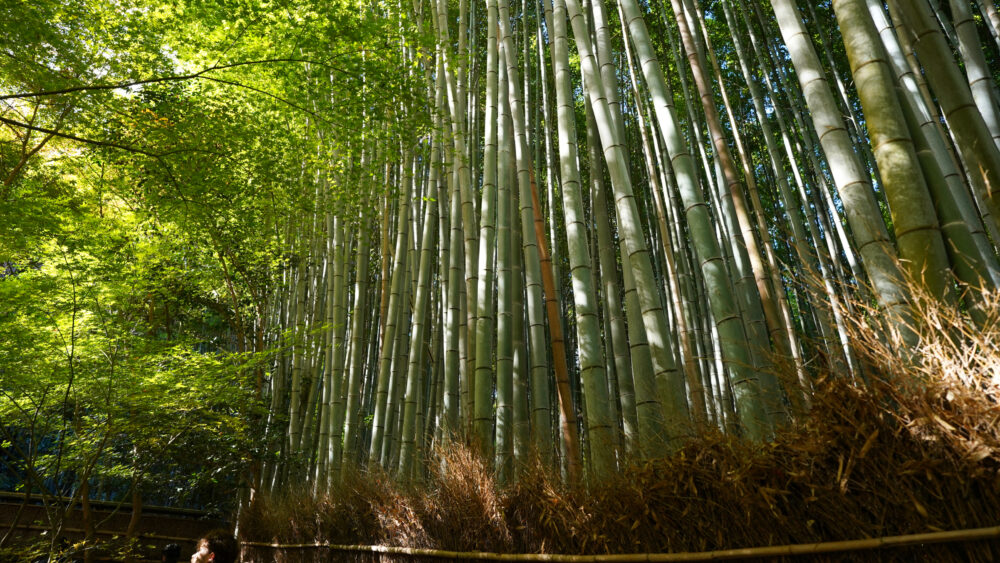
Most of the temple grounds are covered in rich, carpet-like moss. From the center of the main path, visitors can see the beautifully moss-covered garden. Gio-ji is home to over 20 varieties of moss, and visitors enjoy comparing them. Samples of the main types of moss are displayed on a dedicated shelf. The moss garden features a tsukubai, a low stone water basin fed by clear, natural mountain water, as well as a small stream. At the entrance to the thatched hut is a suikinkutsu, a buried water feature that creates musical dripping sounds. Its cool tones are said to soothe the weariness of travel.
The garden’s small path winds through evergreen camellias and the bamboo grove beyond the fence. Stone lanterns are placed along the path as traditional landscape ornaments.
Autumn Scenery
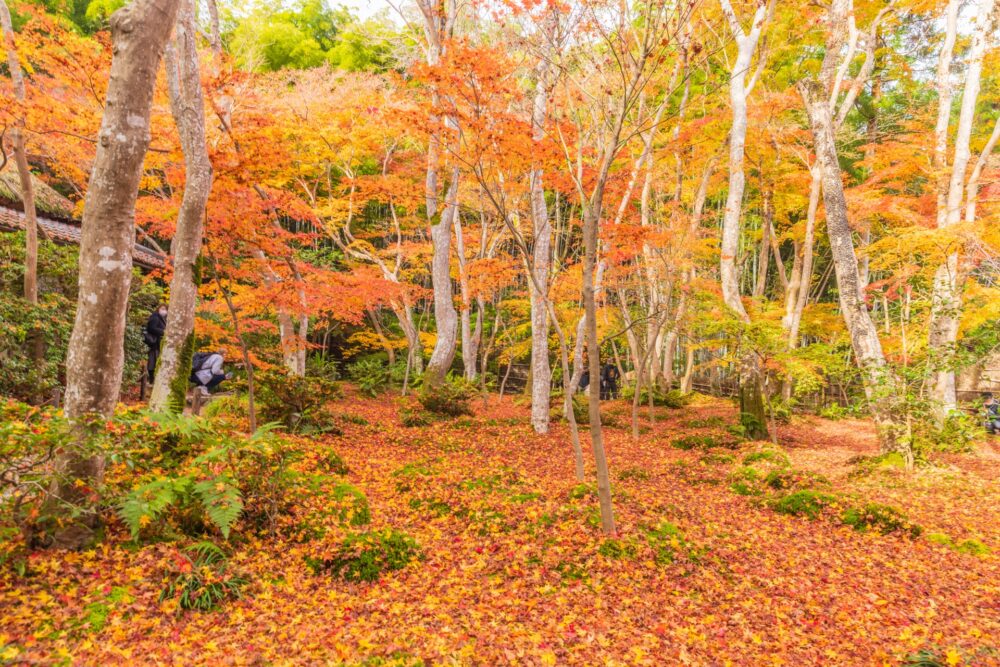
While the Gio-ji garden is beautiful in every season, it is especially popular in the fall. The peak viewing season is from late November to mid-December. Because Gio-ji is located in the Oku-Saga area, autumn arrives a bit earlier here than in other parts of Kyoto.
In the fall, the green maple leaves turn a brilliant crimson, creating a scarlet carpet over the moss garden. The beauty of this scene lies in the sharp contrast between the colorful leaves and the green moss. Sometimes, the moss garden becomes completely covered with fallen red leaves, making the entire area appear deep and rich red. Furthermore, the autumn leaves display a beautiful gradation of colors, ranging from orange to yellow, against the backdrop of green bamboo, creating a picturesque scene that is perfect for photography.
History

The temple’s history is deeply connected to a tragic love story detailed in The Tale of the Heike. The tale begins during the late Heian period, when a shirabyoshi (traditional dancer) named Gion lost the favor of the powerful leader, Taira no Kiyomori (1118–1181). She then became a nun alongside her mother, Toji, and her sister, Ginyo. The three women went into seclusion in a thatched hut at Ojo-in in Oku-Saga. Legend has it that Hotoke Gozen later joined them, and the four women spent the rest of their lives chanting Buddhist prayers.
A monument indicates that Gion passed away in 1172. The statues of Gion and Ginyo, which feature inlaid crystal eyes, the women’s tombs (hōkyōintō pagodas), and the memorial pagoda for Kiyomori (gorintō) are all considered works from the Kamakura period.
Ojo-in fell into ruin at the end of the Edo period. Due to the official policy of separating Shintoism and Buddhism, Gio-ji was abandoned in 1868. However, moved by their story, Kitagaki Kunimichi, the governor of Kyoto Prefecture at the time, offered his support. With additional help from the neighboring Daikaku-ji Temple, which had preserved the temple’s statues, Gio-ji was rebuilt and restored in 1895. Today, it remains a tranquil nunnery surrounded by a beautiful moss garden and bamboo grove.
Buildings
Gallery Gio-ji
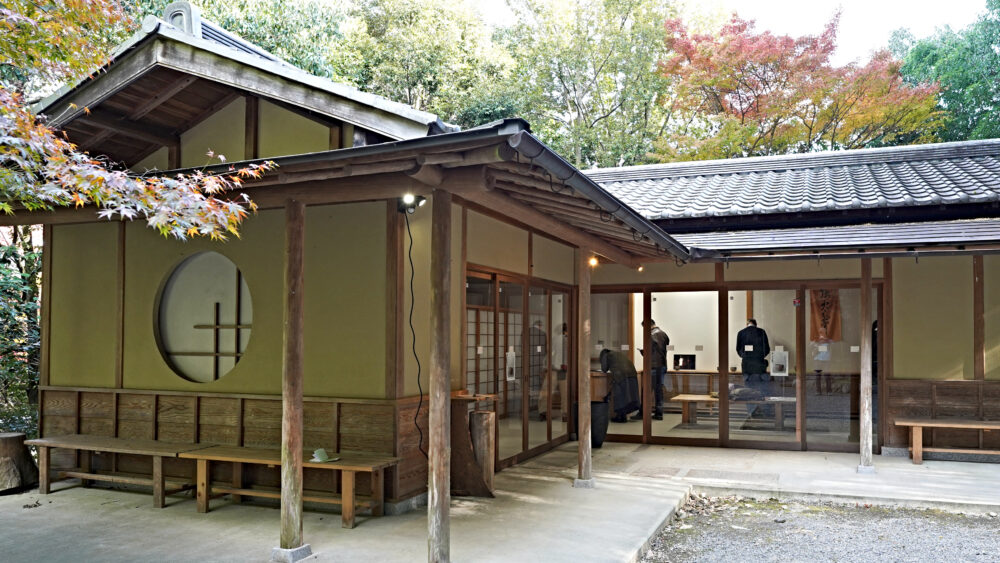
This modern addition serves as an exhibition space for artists, writers, artisans, and students involved in Japanese culture and art. Nearby, you can see the stump of the 150-year-old “Gijo Cherry Tree,” which was famous for the beautiful patterns its fallen petals created on the moss. There is also a new Gijo Cherry Tree planted at the gallery entrance.
Water Features

Near the entrance to the hut, a suikinkutsu (a buried water zither) creates gentle musical sounds that blend with the greenery of the garden, offering a moment of peace. The grounds also feature a tsubaki (a low stone water basin) with pure mountain water and a kakehi (a bamboo aqueduct), whose trickling sound enhances the tranquil atmosphere of Japanese harmony.
The Thatched Hut (Sōan)
The main building at Gio-ji is the Sōan, a rustic hut with a traditional thatched roof. This small hall is the heart of the temple grounds.
History and Construction: The site where Gio-ji now stands was originally home to a temple called Ojo-in, which fell into disrepair during the Meiji era. Inspired by the tragic story of Gion, Kitagaki Kunimichi, the governor of Kyoto Prefecture at the time, had a teahouse from his villa relocated to this spot in 1895 to preserve the temple’s legacy. This relocated structure became the main hall of the newly reestablished Gio-ji temple.
Inside, the hut features traditional tatami mat floors and a distinctive round window with a lattice. The main Buddha hall (butsuma) houses the principal deity, Dainichi Nyorai (the Cosmic Buddha), enshrined on the altar. Flanking the central figure are five wooden statues: Gion; her sister, Ginyo; their mother, Toji; Hotoke Gozen, the dancer who captured Kiyomori’s affection after Gion; and Kiyomori himself. The statues of Gion and Ginyo are particularly notable and are believed to be works from the late Kamakura period. They feature inlaid crystal eyes, known as gyokugan.
The Yoshino Window (The Rainbow Window)
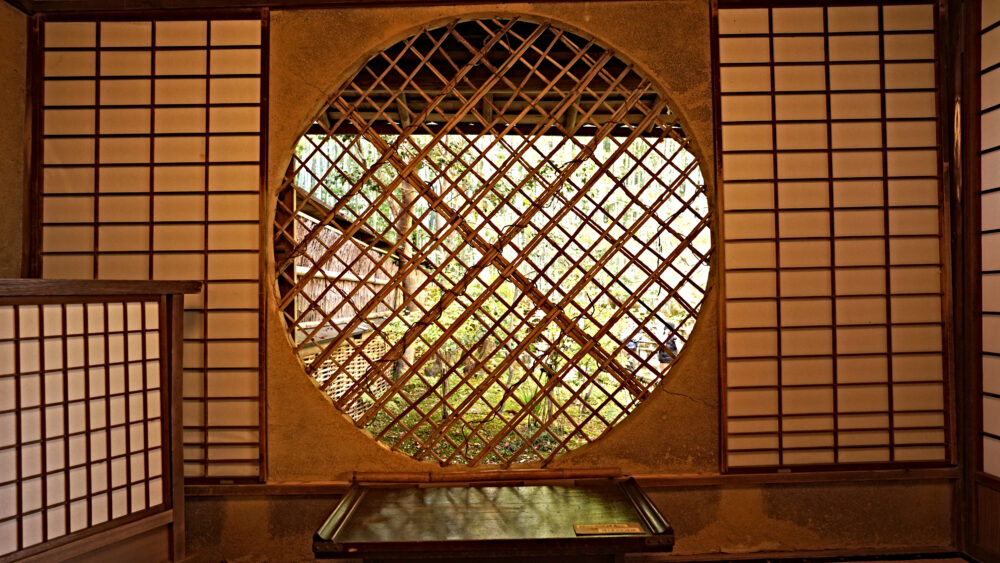
In an adjoining room of the thatched hut is a large, round window known as the Yoshino Window. It is more famously called the “Rainbow Window” (Niji no Mado) because sunlight filtering through the green maple leaves in the garden casts a beautiful spectrum of colors onto the window’s paper screen. The window is also shrouded in mystery because its shape appears uniquely different when viewed from inside the room compared to its simple circular form seen from the outside.
Tombs and memorials
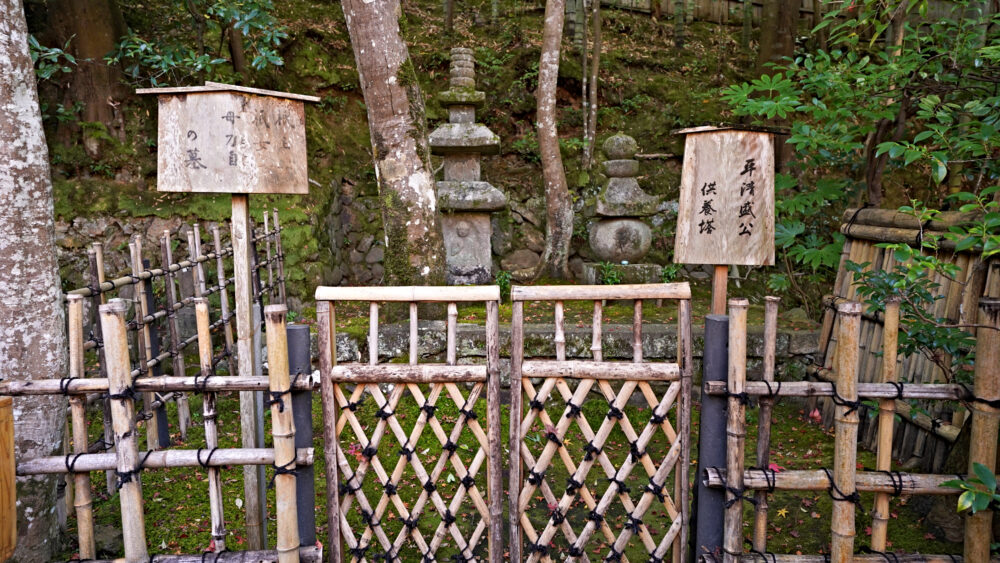
In the cemetery area, you will find several stone pagodas. The taller pagoda (hōkyōintō) on the left is the tomb of Gion, Ginyo, and their mother, Toji. To the right is a five-ringed pagoda (gorintō) that stands as a memorial tower for Taira no Kiyomori. Both are believed to have been constructed during the Kamakura period.
Poem Monument
A stone monument engraved with the farewell poem that Gion wrote on a sliding screen door before leaving Kiyomori is located here. This poem is recorded in The Tale of the Heike: “As the grasses of the field, we sprout and wither alike. Who can expect not to fade when autumn comes?”
Information
Opening hours & Admission fees
Hours: 9:00 a.m. to 5:00 p.m.
Last admission: Entry is permitted until 4:30 p.m.
Admission Fees
| Visitor Category | Price |
|---|---|
| Adults | 300 yen |
| Children (Students) | 100 yen |
A combination ticket is also available for entry to both Daikaku-ji Temple and Gio-ji Temple.
Combination ticket (adults only): 600 yen
This ticket offers a significant discount since separate entry to Daikaku-ji (500 yen) and Gio-ji (300 yen) would normally cost 800 yen.
Please note that the combination ticket does not include admission to the Osawa Pond area at Daikaku-ji Temple.
Access Information
Address: 32 Sagatoriimoto Kozakacho, Ukyo-ku, Kyoto, 616-8435
How to Get There
Nearest bus stop: “Saga Shakado-mae” on the Kyoto City Bus line.
Time from bus stop: approximately a 15-minute walk.
- From Kyoto Station: Take Kyoto City Bus No. 28 and get off at “Saga Shakado-mae.”
- From Shijo Karasuma, take Kyoto City Bus No. 91 and get off at “Saga Shakado-mae.”
- From the Hankyu Arashiyama Station, take the Kyoto City Bus No. 28 bound for Daikaku-ji. The ride takes about 10 minutes, followed by a 15-minute walk.
Parking Information:
There is no parking available.
Given this uncertainty, it is highly recommended that you visit via public transportation.
Photography Policy
To maintain a tranquil environment for all visitors and to protect the temple’s cultural assets, the following photography rules are in place at Gio-ji Temple:
No photography of Buddhist statues. Please refrain from photographing the statues (Dainichi Nyorai, Kiyomori, Gion, etc.) inside the thatched hut.
Equipment Restrictions: The use of monopods and tripods is prohibited for all cameras, including smartphones, throughout the temple grounds.
Links and Resorces
Official Website
Gioji Temple (English Text)
